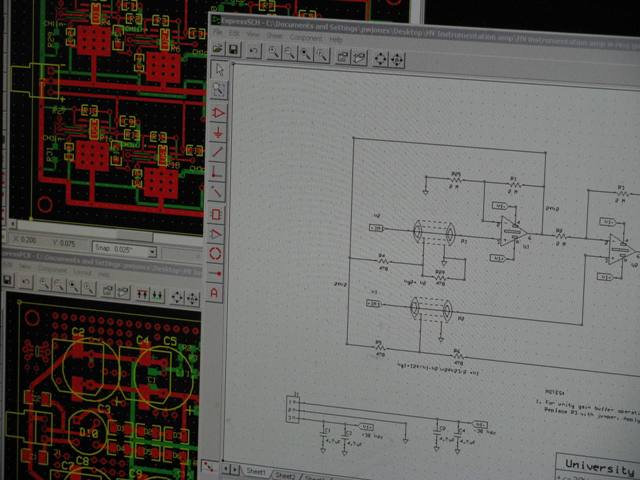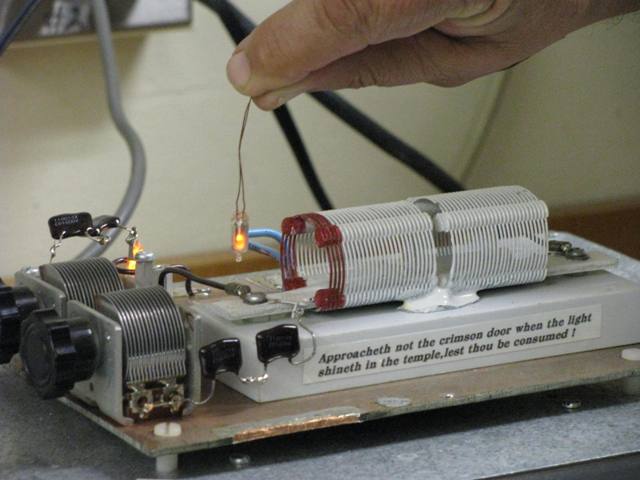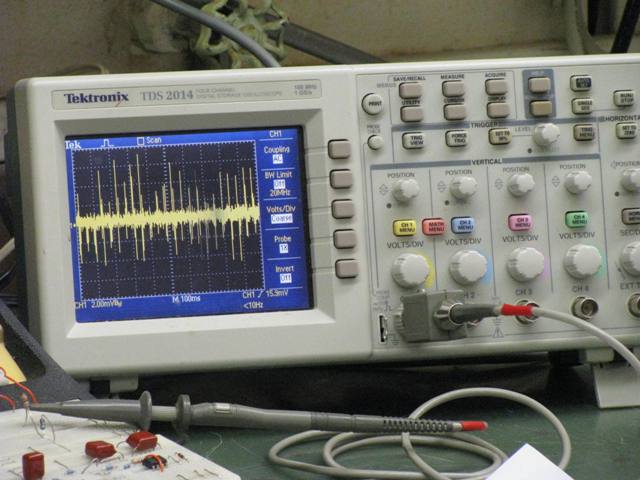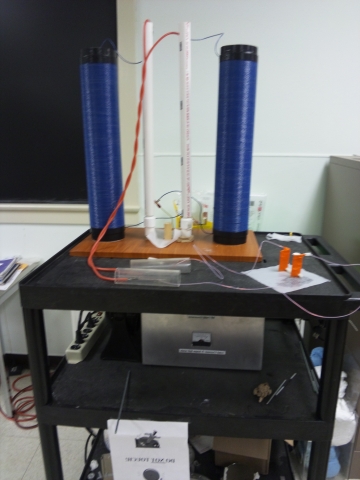Research and Demonstration Project Assistance
Here are a few ideas where we offer assistance to other departments within the University but also to the wider educational environment beyond.
New ideas are always welcome too. Please feel free to share your ideas via email or phone.
Physics
Physics is the primary area of our responsibility and the diverse types of electronics applications utilized here are nearly limitless.
Examples of work performed in the Electronics Shop for Physics:
- Construct circuitry to measure nano-Ampere all the way down to pico-Ampere and even lower electric currents produced by particle accelerators in the nuclear lab. In conjunction with this, we build current sources accurate to 0.1 % in order to test the accuracy of our metering.
- Build fast amplifiers to detect the signals from various types of charged particle detectors.
- Design and construct both magnetic and electrostatic charged particle beam steering controllers for lithography applications.
- Design and build high-stability variable frequency oscillators with frequencies stable to 5 significant figures WITHOUT crystals or narrow band ceramic filters.
- Devise exotic instruments as a dynamic load sensing current source used to electrochemically etch very fine needles with atomic scale sharpness for use in STM (Scanning Tunneling Microscopy) experiments.
- Design the vacuum tube VHF oscillator circuitry for use INSIDE a 1.5 Mega Volt accelerator, because solid state devices cannot survive in the high E-field environment.
- Build stepper motor controllers that had to control motors inside the accelerator as well.
- Devised a high frequency, high voltage power oscillator which is used to heat samples of water when placed between parallel conducting plates.
- Experiment with using millimeter-size surface-mount resistors as underwater hydrophone transducers by utilizing a super-high gain amplifier and appropriate filtering to separate the signal from noise and interference. This is anticipated to have medical applications in the future.
Biology
Examples of work performed in the Electronics Shop for Biology:
- Repairing instrumentation.
- Design of an electronic timing system with solenoid drivers to open and close gas valves for controlling the atmosphere for baby alligators.
Ideas
However, the fact that so many biological systems and organisms generate both direct electric currents and time varying signals suggests the potential for significant collaboration. This can range all the way from basic neural activity to the navigation pilot signals generated by electric (i.e. electrogenic) fish in places like South America and Africa. Some of these fish are readily acquired in local aquarium stores and produce voltages that are easily amplified by a high impedance FET amplifier. This would be fertile ground for an outreach project to local grade schools in addition to research. Converting the pilot signal of a fish into an audible sound through a speaker would be guaranteed to catch the attention of children.
Related links:
Electrogenic Freshwater Fishes
In the area of cellular electrical activity and specifically in the area of neurons, there has been much research in the area of synthesizing the generation of neuron electrical behavior and neural computing by fairly straightforward but significant electronic circuitry. A few examples are described here:
Application of the Hindmarsh-Rose Neural Model in Electronic Circuits
One idea for a demonstration would be to build an array of circuit elements that mimic basic neural activity and connect them so as to perform a function. A board display using LEDS could visually show the signal flow.
Human Voice Communication and Speech Intelligibility
It is known that there are certain critical frequencies in the human voice spectrum that affect the intelligibility of speech. It would be a relatively easy task for us to build a selectable set of electronic filters that would distort the amplitude and phase of selected portions of the voice spectrum and demonstrate the results through a loudspeaker. We could also create the inverse of the filter function to de-scramble the voice signal. Once again, this type of demonstration is the sort of thing that would fire the interest and imaginations of both grade school level and university level minds. With individual privacy becoming an ever more relevant issue in our society, this topic should spark even more interest.
The Effect of Bandwidth on Speech Intelligibility
Astronomy and Astrophysics
Radio astronomy uses sensitive amplifiers and this is an area in which we could be of assistance in either design or evaluation roles. In the field of solar spectrum monitoring, we see the possibility of constructing low cost optical spectrum monitors using the not widely known principle that LEDs can detect light in the same narrow wavelength band in which they emit radiation.
Receivers for Low-Frequency Radio Astronomy
Earth Science and Weather Study
Lightning strikes are known to generate long wave VLF radio waves that propagate through the atmosphere. We can build VLF receivers that can audibly monitor the 'whistling' effects created by this phenomenon. This is another item that can be provided to grade level schools to demonstrate to kids. Read more about this phenomenon here:
Lightning Detection Methods and Meteorological Applications

Screen shot of electronic layout and schematic software tools used to design printed circuit boards for special instrumentation.

Photo of RF electromagnetic field generator used for localized heating of small semiconductor or other material samples.

A digital oscilloscope which is an important part of our test equipment.

The is the actual bi-phase resonator system, showing the two air-core 1 milli-Henry coils, wound on 4 inch PVC pipe.
The thin diameter white tubes contain the series resonator capacitors for the two coils. The metal box on the shelf below the coils contains the power amplifier into which we apply the feedback signal from the resonator and forms the gain element of the oscillator.

High Voltage Bi-phase Resonant Signal Generator Simulation Circuit
Click here for larger view.

C3 = 0 pico-Farads
In these Magnitude and Phase versus Frequency plots, we show simulation results for capacitor C3 included and with it excluded.
Note the bifurcated frequency response arising from tolerance differences between the series resonant capacitors in the two branches of the circuit. Including C3 as a bridge between the branches results in the response being returned to a single resonant frequency." Click here for slide show.

C3 = 18 pico-Farads